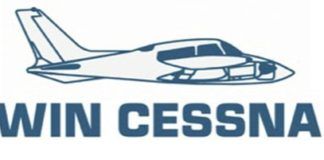The article “Deep Dive into Mins” on Page 16 mentions a change earlier this year by the FAA, allowing us to fly faster than the approach category of our aircraft. Recall that if we’re on approach flying faster than our aircraft approach category, we should use minimums from the faster category. That’s still the guidance, but we’re now permitted to still use the lower category mins.
If we are flying an airplane that is certified in Category A, we may decide that we can fly the approach safely at 105 knots and logically we would use Category B minimums. In AIM 5-4-7.c. the FAA says it is now permissible to fly an approach at a higher speed that puts us in a higher category and still use the minimums of the airplane’s original category. In their example, a Category C airplane flying at 145 knots—a speed that puts it in approach Category D—could use C minimums especially if Category D minimums are not published. Of course, it would be interesting to know why there are no Category D minimums.
Wouldn’t this increase risk? Approach procedure designs are based on the highest speed for a category; Safe, or Not? for example, Category A aircraft top speed is 90 KIAS so minimums are based on that speed. The potential risk of flying faster is most significant on circling approaches and on the missed since faster speeds mean a larger turning radius.
Is safety really compromised? I don’t think so. What is critical for a straight-in landing is being able to land and stop on the runway without heroic efforts. What matters then is not so much the indicated approach speed that determines the airplane’s approach category but the ground speed and perhaps most important, the actual touch down speed. In a strong headwind on final, ground speed would be lower and the touchdown speed would probably be closer to the lower category.
However, the risk might increase on turns during the miss or a circle to land, since an airplane would potentially leave the protected airspace at its higher speed. The design of the protected area for circling assumes a 25-degree bank angle for Category A and B and 20 degrees for Category C and D. Most airplanes can easily be hand flown manually using 30 degrees of bank. (No, I’m not suggesting steep turns in the soup, but 30 degrees shouldn’t be a problem.) So, if you’re flying a higher category speed you could tighten your bank a safe amount.
But, digging further into design criteria, Category A (max 90 KIAS) protected circling airspace assumes up to 100 knots and Category B (91-121 KIAS) allows 135 knots. Additionally, with a safe choice, it’s best to circle into the wind (decided before approach); that too will cover less area. Last, the final approach is normally flown toward the wind, so on the miss you’re initially also into the wind. If the gods are smiling, you’ll even be turning more into the wind. Know ahead of time and adjust accordingly.
So, is it safe to fly faster than the mins you’re using? I believe it can be. We need to be aware of our groundspeed and take all possible steps to keep the area under our turns as small as possible. And with so many of us flying with EFIS or at least GPS, that groundspeed is readily available. With those precautions, this new guidance from the FAA can be safely followed.





